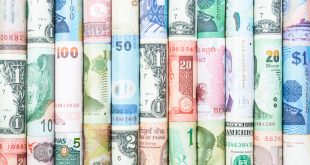The scheduled meeting between President Joe Biden and Chinese President Xi Jinping in San Francisco, according to traders, may signal an optimistic thawing of tensions and improve sentiment towards the Asian country’s battered assets.
In Xi’s first trip to the US since 2017, when he met with then-President Donald Trump, the impending meeting will be significant. It will also be his first meeting with Biden in a year.
Biden supported limiting China’s access to cutting-edge technology and maintained the tariffs Trump had placed on a variety of Chinese goods.
The prospects for China’s economy are gradually improving, as evidenced by the fact that fewer leaders have attended each of the last three Belt and Road Forums than there were at the first one in 2017.
The IMF was the most recent institution to raise growth forecasts and declare that deflation is unlikely in China. Supporting domestic consumption is government spending backed by more bond issues.
Still, last week’s data showed declining CPI and PPI inflation, primarily due to decreased food costs and a decline in the demand for manufactured goods.
October saw another decline in China’s trade balance, which was attributed to lower exports to the US and Europe. However, a rise in commodity imports indicated some optimism on the local front. The local government keeps supporting the troubled real estate industry, but its finances are being stretched by the poor sales, and real estate companies are still deeply in debt.
Global markets are impacted by Chinese investors’ need to support rising local bond issuance volumes. Global bond yields rose last week following a lackluster US Treasury auction that attracted fewer bidders from China or Japan. In otherwise aimless trading, Chinese stock markets followed US markets, and the yuan is stabilizing around the $/CNH 7.30 mark, though further depreciation is still possible.
From a previous estimate of 5.0%, the International Monetary Fund increased its forecast for China’s GDP growth to 5.4%. The IMF raised its forecast for growth to 4.6% for the upcoming year from 4.2%. China’s inflation is predicted by the IMF to be about 2% for the upcoming year, so the country is not considered a deflation risk.
Future growth in China’s domestic economy is anticipated as a result of increased imports of commodities, especially solid energy. In October, imports of natural gas increased by 15.6% YoY, while imports of crude oil increased by 13.5% YoY. Imports of coal increased 66.8% over the previous year.
The amount of bonds issued by local governments has increased as well; they have reached 8.5 trillion yuan ($1.2 trillion), which is almost twice as much as they were before the Covid-19 pandemic when they peaked at 4 trillion yuan.
In an effort to relieve debt pressures and offer financial support, the central government permitted local governments to issue more than 1 trillion yuan in refinancing bonds last month.
Land sales revenue is still a major source of funding for local governments, so China’s financial stability depends on making a soft landing in the real estate sector. In a demonstration of the Cross-border Interbank Payment System, 4,300 banks across more than 100 countries and regions were linked by 1,500 users. In the first half of this year, cross-border yuan payments increased by 20% to a total of 24.5 trillion yuan ($3.4 trillion).
Despite geopolitical woes, China’s premier trade show, the China International Import Expo, drew a record 289 Fortune 500 companies. China still has unresolved trade disputes with Australia and the EU, and new tariffs on exports of EVs and steel and aluminum products are in place. China also obtained a fresh energy agreement with Qatar and provided capital to China Vanke, the biggest real estate company.

 Noor Trends News, Technical Analysis, Educational Tools and Recommendations
Noor Trends News, Technical Analysis, Educational Tools and Recommendations




